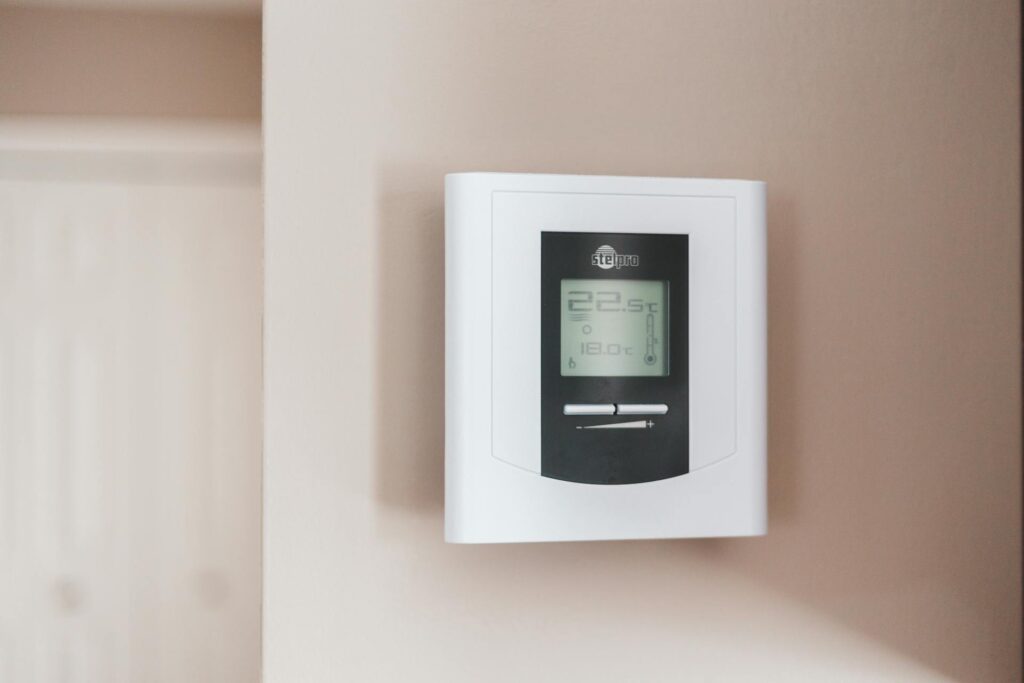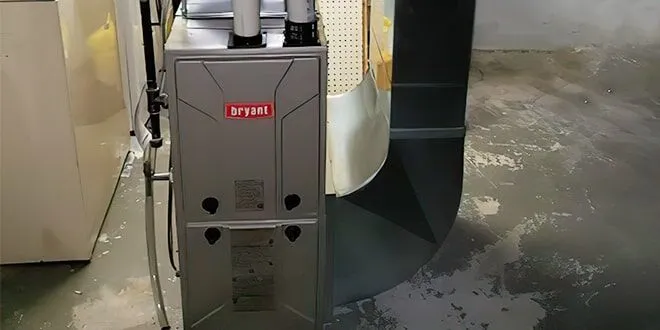As the cold Ottawa winter approaches, ensuring that your home’s heating system is up to the task is crucial. A well-functioning furnace is essential for maintaining a comfortable and warm environment during the freezing months. But how do you know when it’s time to upgrade your furnace? At Oria Heating and Cooling, we understand the importance of a reliable furnace and offer a full range of HVAC services, including furnace installation, repair, and maintenance. In this comprehensive guide, we’ll explore the top five signs that indicate it’s time to upgrade your furnace before winter sets in.
1. Age of Your Furnace
Understanding the Lifespan of a Furnace
The average lifespan of a furnace is typically between 15 to 20 years. If your furnace is approaching or has surpassed this age range, it’s a strong indicator that an upgrade might be necessary. As furnaces age, they become less efficient and more prone to breakdowns, which can lead to increased energy bills and costly repairs.
Signs of an Aging Furnace
- Increased Energy Bills: As your furnace ages, it loses efficiency, causing it to work harder to maintain the desired temperature. This increased effort results in higher energy consumption and, consequently, higher utility bills.
- Frequent Repairs: If you find yourself frequently calling for repairs, it’s a sign that your furnace is nearing the end of its lifespan. The cost of constant repairs can quickly add up, making an upgrade a more cost-effective solution.
- Reduced Heating Efficiency: An older furnace may struggle to heat your home evenly, leading to cold spots and inconsistent temperatures throughout your living space.
Why Upgrade?
Upgrading to a new, high-efficiency furnace can significantly reduce your energy bills and improve the overall comfort of your home. Modern furnaces are designed to operate more efficiently, providing consistent and reliable heating while using less energy. Additionally, new furnaces often come with advanced features such as variable-speed blowers and smart thermostats, which further enhance energy efficiency and comfort.
2. Uneven Heating in Your Home

Identifying Uneven Heating
Uneven heating is a common issue in homes with aging or inefficient furnaces. If you notice that some rooms are warmer than others, or if you experience significant temperature fluctuations between different areas of your home, it’s a sign that your furnace is struggling to distribute heat evenly.
Causes of Uneven Heating
- Aging Furnace: As furnaces age, they may lose their ability to distribute heat evenly throughout the home, leading to cold spots and inconsistent temperatures.
- Inadequate Ductwork: Poorly designed or aging ductwork can contribute to uneven heating by restricting airflow and causing heat loss as warm air travels through the ducts.
- Incorrect Furnace Size: If your furnace is too small for your home, it may struggle to provide adequate heat, leading to uneven heating. Conversely, an oversized furnace can cause short cycling, where the furnace turns on and off frequently, resulting in inconsistent temperatures.
Why Upgrade?
Upgrading to a new furnace can resolve issues with uneven heating, ensuring that your entire home remains comfortable throughout the winter. A modern, properly sized furnace can distribute heat more evenly and efficiently, eliminating cold spots and providing consistent warmth. Additionally, upgrading your ductwork or incorporating zone heating systems can further improve heating efficiency and comfort.
3. Rising Energy Bills

Understanding Energy Efficiency
One of the most noticeable signs that your furnace may need an upgrade is a steady increase in your energy bills. While energy costs can fluctuate due to factors like weather conditions and fuel prices, a significant and consistent rise in your heating costs is often indicative of an inefficient furnace.
Causes of Rising Energy Bills
- Decreased Efficiency: As furnaces age, they lose efficiency due to wear and tear on components, dirt buildup, and outdated technology. This decreased efficiency forces your furnace to work harder and longer to heat your home, resulting in higher energy consumption.
- Inadequate Maintenance: Lack of regular maintenance, such as filter changes and tune-ups, can reduce your furnace’s efficiency, leading to increased energy usage and higher bills.
- Old Technology: Older furnaces may not have the advanced features and technology found in modern units, such as variable-speed blowers, two-stage heating, and smart thermostats. These features help optimize energy use and reduce costs.
Why Upgrade?
Upgrading to a high-efficiency furnace with a higher Annual Fuel Utilization Efficiency (AFUE) rating can significantly reduce your energy bills. Modern furnaces are designed to maximize energy efficiency by converting a higher percentage of fuel into usable heat. Additionally, incorporating smart thermostats and other energy-saving features can further enhance efficiency and provide greater control over your heating system, allowing you to reduce energy consumption and save money on utility bills.
4. Frequent Repairs and Unreliable Performance
Signs of an Unreliable Furnace
If you find yourself frequently calling for furnace repairs, it’s a clear sign that your current system may be on its last legs. While occasional repairs are normal, frequent breakdowns and the need for constant repairs indicate that your furnace is no longer reliable and may be nearing the end of its useful life.
Common Repair Issues
- Ignition Problems: Issues with the ignition system, such as a faulty pilot light or electronic ignition, can prevent your furnace from starting or cause it to shut down unexpectedly.
- Blower Motor Failure: The blower motor is responsible for circulating warm air throughout your home. If it fails or becomes faulty, your furnace will struggle to distribute heat effectively.
- Heat Exchanger Cracks: The heat exchanger is a critical component of your furnace, responsible for transferring heat from the combustion process to the air that circulates through your home. Cracks in the heat exchanger can lead to dangerous carbon monoxide leaks and require immediate replacement.
- Thermostat Malfunctions: A malfunctioning thermostat can cause your furnace to turn on and off frequently, leading to inconsistent heating and increased wear and tear on the system.
Why Upgrade?
Continuing to invest in repairs for an aging and unreliable furnace can be a costly endeavor with diminishing returns. Upgrading to a new furnace eliminates the need for frequent repairs and provides you with a reliable heating system that operates efficiently and consistently. Modern furnaces are built with durable components and advanced technology, reducing the likelihood of breakdowns and ensuring dependable performance throughout the winter.
5. Inadequate Home Comfort
Recognizing Inadequate Comfort
A well-functioning furnace should provide consistent and comfortable heating throughout your home, regardless of the outdoor temperature. If you’re experiencing issues such as drafts, cold spots, or uneven temperatures, it’s a sign that your furnace may no longer be capable of meeting your home’s heating needs.
Factors Contributing to Inadequate Comfort
- Inconsistent Heating: An aging or inefficient furnace may struggle to maintain a consistent temperature, resulting in fluctuating indoor temperatures and discomfort.
- Insufficient Airflow: If your furnace is not producing enough airflow, it may struggle to distribute warm air evenly throughout your home, leading to cold spots and drafts.
- Inadequate Humidity Control: Maintaining proper humidity levels is essential for home comfort during the winter. An old or outdated furnace may lack the ability to effectively manage humidity, leading to dry air and discomfort.
Why Upgrade?
Upgrading to a new, high-efficiency furnace can significantly improve your home’s comfort by providing consistent and reliable heating. Modern furnaces are equipped with advanced features such as variable-speed blowers, modulating burners, and humidity control, all of which contribute to a more comfortable indoor environment. By upgrading your furnace, you can eliminate drafts, cold spots, and temperature fluctuations, ensuring that your home remains warm and cozy throughout the winter.
Additional Considerations When Upgrading Your Furnace

1. Energy Efficiency Ratings
When upgrading your furnace, it’s essential to consider the AFUE rating of the new unit. As mentioned earlier, the AFUE rating measures the efficiency of a furnace by indicating the percentage of fuel that is converted into usable heat. Furnaces with higher AFUE ratings are more efficient and can help reduce your energy bills.
2. Proper Sizing
Choosing the right size furnace for your home is crucial for optimal performance and efficiency. A furnace that is too small will struggle to heat your home adequately, while an oversized furnace can lead to short cycling, increased wear and tear, and higher energy bills. Our team at Oria Heating and Cooling can perform a load calculation to determine the appropriate size furnace for your home, ensuring that your new system operates efficiently and effectively.
3. Installation Quality
The quality of the installation plays a significant role in the performance and longevity of your new furnace. Even the most advanced furnace will not perform optimally if it is not installed correctly. At Oria Heating and Cooling, our experienced technicians are trained to provide professional installation services, ensuring that your new furnace is installed properly and operates at peak efficiency.
4. Maintenance and Care
Regular maintenance is essential for keeping your furnace in top condition and extending its lifespan. After upgrading your furnace, it’s important to schedule annual maintenance services to keep the system running smoothly. Maintenance tasks such as filter changes, system cleaning, and tune-ups can prevent potential issues, improve efficiency, and ensure reliable performance throughout the winter.
5. Rebates and Incentives
Upgrading to a high-efficiency furnace may qualify you for rebates and incentives from government programs or utility companies. These incentives can help offset the initial cost of the upgrade and make it more affordable. Be sure to inquire about available rebates and incentives when considering a furnace upgrade.
Conclusion
As winter approaches in Ottawa, it’s essential to ensure that your furnace is capable of keeping your home warm and comfortable. If your furnace is showing signs of aging, inefficiency, frequent breakdowns, or inadequate performance, it may be time to consider an upgrade.


